A cap rate (capitalization rate) is a term in commercial real estate that refers to the way a building is evaluated. It's calculated by taking the net operating income, NOI, and dividing it by the cost of the building in order to give the rate of return.
Capitalization rate = Net operating income / Cost of the building
The cap rate is a great unifying metric because it assumes the property is purchased in cash and not a loan, which can vary widely. It allows you to compare different buildings at a glance and quickly determine how the asking price is valued based on the rent.
The NOI is the annual income expected from rent minus the expenses for managing the property. This includes things like lawn maintenance and taxes but not debt service.
The asset market value can be used in place of the cost of the building in determining the cap rate if the building is not for sale. If the building was inherited for example, there is no building cost, so using the current asset value divided into the NOI will yield the most accurate cap rate.
Examples
Assume a building has an annual rent collection of $120,000/year. The property has $20,000 in maintenance expenses and taxes, leaving $100,000 in NOI.
The building cost is $1 million. The NOI of $100,000 divided by the building cost of $1 million is 10%. This means if the investor bought the building in cash, he could expect his return on investment to be 10% which is the same as a 10% cap rate.
$100,000/$1,000,000 = 10%
The cap rate is a better measures of value compared to ROI is because the ROI is determined by the debt service, which can vary widely. Some banks lend 80% of the purchase price while others lend only 60%, and some investors will choose to purchase completely in cash.
The cap rate can be compared to riskiness. The riskier the investment, the higher the return investors will want to see. If there is a single mom and pop shop renting the building without a substantial personal guarantee, investors will want to get a higher return on the asset value, usually upwards of 10%.
If the tenant is a highly accredited national chain with a low chance of default, investors are willing to accept returns on the asset value as low as 5%.
Real estate comes with inherent risks and several other factors can lower the cap rate. If there is a 4 tenant building generating $100K in annual rent and two tenants move out, the annual rent collection could drop to $50K. Since property maintenance expenses will stay the same, this will have a severe negative impact on the cap rate. Sometimes these buildings make for attractive investments as the upside potential is high. If the cap rate suffers too much from a loss of rent, the traditional land/improvement value may surpass the rental income value.
In another example, rent might stay the same but maintenance fees or taxes could increase, also adversely affecting the cap rate.
In another case, the asset value of the property could diminish, similar what happened in 2008, which would hurt the cap rate.
Generally speaking, as the seller of the building, the lower the cap rate the better. A $100K NOI at a 5% cap rate yields a sale price of $2 million, while a 10% cap rate yields a sale price of $1 million.
However, in most cases the cap rate will get better over time because the purchase price remains the same but leases have rent increases built into them. Overtime, the rent increases faster than the expenses and the debt service, which is what makes real estate such an attractive investment.
If the building is purchased for $1 million, the current annual rent is $120,000, and there is a 3% annual rent increase, the cap rate will continue to improve for the owner.
If you need help finding the perfect location email podcast@



